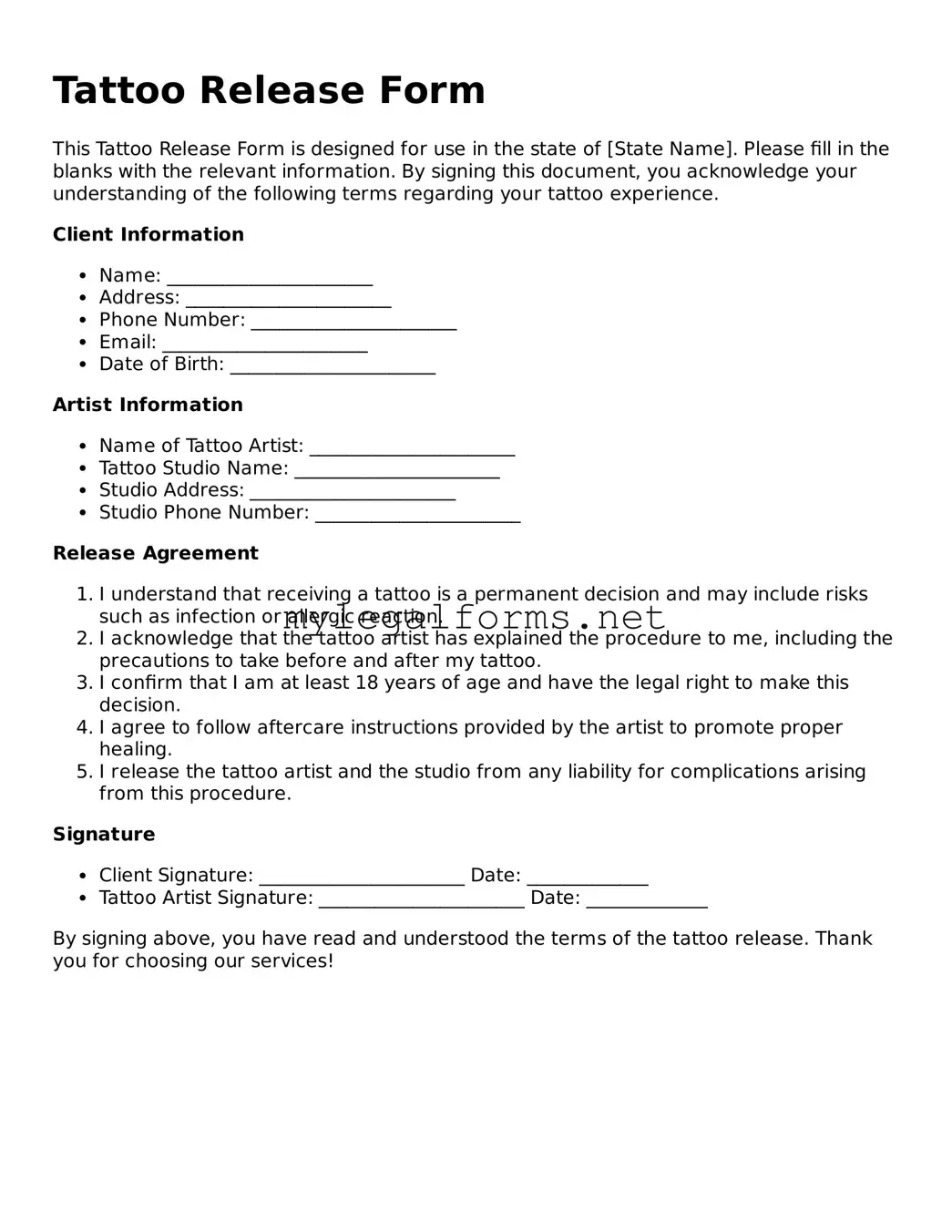Filling out a Tattoo Release form is a crucial step in the tattooing process. However, many individuals make common mistakes that can lead to complications. Understanding these errors can help ensure a smoother experience.
One frequent mistake is incomplete information. Many people rush through the form and fail to provide all the necessary details, such as their full name, contact information, or the specific design of the tattoo. This lack of information can delay the tattooing process or even result in miscommunication.
Another common error is not reading the terms carefully. The release form often contains important information regarding consent, liability, and aftercare. Skimming through these sections can lead to misunderstandings about what to expect during and after the tattooing process.
Additionally, some individuals neglect to ask questions if they do not understand certain terms. It is vital to clarify any uncertainties before signing the form. Failing to do so can result in unexpected consequences that could have been easily avoided.
Many people also forget to review their personal health history. Certain medical conditions or allergies may affect the tattooing process. Providing accurate health information is essential for the artist to ensure safety and avoid complications.
Another mistake is not providing emergency contact information. In case of an adverse reaction or emergency during the tattooing process, having a designated contact can be crucial. This information is often overlooked but is vital for the artist’s records.
Some individuals fail to date the form properly. An undated release form can raise questions about when consent was given, which may lead to legal issues down the line. Always ensure that the date is clearly indicated.
Another oversight is not keeping a copy of the signed form. Retaining a copy for personal records can be beneficial in case of disputes or misunderstandings in the future. Without a copy, individuals may find it challenging to prove their consent.
People sometimes also sign without witnessing the artist's signature. A valid release form should include both parties' signatures. Not having the artist's signature can render the document ineffective.
Finally, a lack of emotional preparedness can lead to regret. Individuals should take time to consider their decision before signing the release. Rushing into a tattoo without proper reflection can result in dissatisfaction later on.
By avoiding these mistakes, individuals can ensure that their tattoo experience is positive and free from unnecessary complications. Taking the time to complete the Tattoo Release form accurately is an essential step in the tattooing process.
